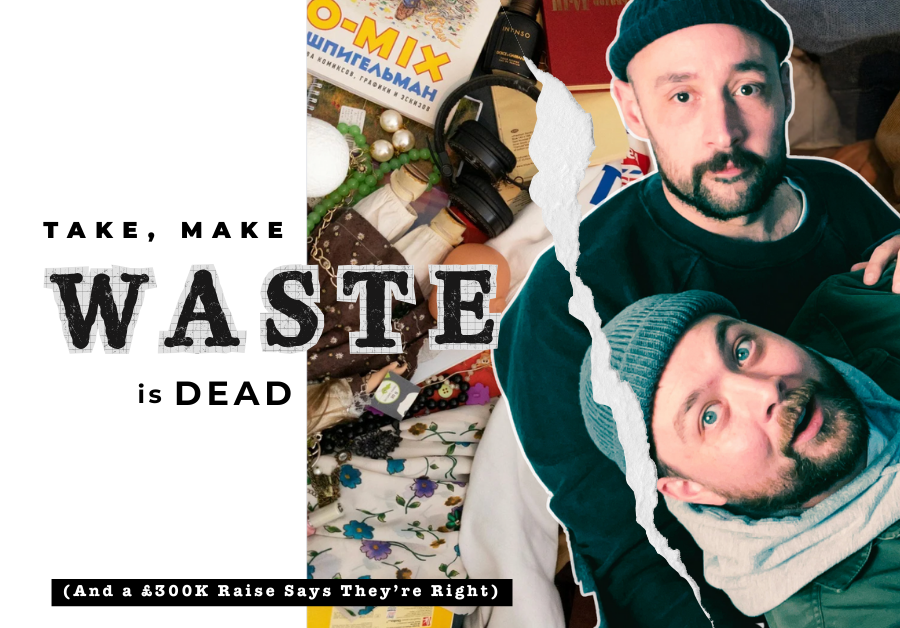This is the second in a series of articles by MOHARA and case studies, originally posted on LinkedIn, investigating the current and evolving state of the online marketplace. Do consider also reading part one.
Would you shop in a store that had no products? The shoe shop that has no stock? The corner shop where the shelves are empty? If you open a shoe shop, you need to buy some shoes first. This ties up your cash in working capital and is one of the primary risks with business, that you’ll be left with some stock that you can’t sell.
What is working capital for a marketplace?
Marketplaces are seductive in that they appear to offer a way out of this issue – someone else carries this risk – and so you can just cream off the commissions in a risk-free way. But why would someone shop with you if you have no sellers? And, more subtly, why would a seller sell with you without having customers [buyers]? Basically, you have a paradox – how do you get customers without having anything to sell, but how do you find something to sell without customers? Well, in the same way as the shoe shop, you have to fund one side of the transaction until you have enough scale that the other side is choosing the shop with you. And this is the fundamental macro consideration when you’re determining how long it will take before you make money from your marketplace.
Put another way, what marketplaces do is provide liquidity.
However, this liquidity costs money – you need to be able to pay to be able to provide that liquidity (both for customers and sellers). Otherwise, if you’re not bringing liquidity to the transaction, you’re not creating value, and nobody will use you.
How long the process takes depends on how quickly you can break even on your customer base (both buyer and seller side). If you have a shoe shop, you’re probably specialising on a shoe (and therefore a pretty specific customer) type – fashion, sports, etc. You’re also in a specific geography. Provided other basics are right, you should at least be able to sell your stock easily enough, and maybe carry on trading. If your marketplace is for, e.g. all users of taxis in virtually all locations, then to have enough liquidity you’re going fund an enormous amount. Uber, the world’s most expensive taxi company – which owns no taxis – recently posted a record loss, yet it’s worth $70 billion or more. How is this possible?
Big TAM, little SOM
At a simple level, the larger your market, the more chance it’s not going to be homogenous, and so the harder it is to acquire your customers because there’s less synergy between them. There’s less opportunity for word-of-mouth transmittal, and less of a cohesive community for a social media strategy. Less chance to provide enough choices for customers. So while the returns ultimately might be larger, you will require additional resources to get sufficient liquidity, and you also run the risk that someone (either incumbents or another marketplace) will react and close out your opportunity.
The easy answer is to see how you can break your market down.
Yes, your ‘total addressable market’ may have you and investors salivating, but that strength is also your weakness. It’s the little ‘serviceable, obtainable market’ that you need to be interested in. It’s no surprise that Uber trialled first in San Francisco, in 2011. What, fundamentally, does (did?) Uber do? It makes it easier and cheaper to get a cab and does this by ensuring that cabs are more highly utilised and therefore can charge/accept lower fees per mile. How is that possible? It focuses on metro areas, where there are both highly fragmented or monolithic suppliers and a high density of users/buyers/customers.
But that’s not the only example. If geography isn’t important, focus on a really narrow niche first. Be known for the place to go for, e.g. handcrafted goods (Etsy or Not On The High Street). Even then, funding liquidity has taken a long time for these marketplaces to start to see returns.
Where liquid becomes a sauce
Of course, ‘funding’ liquidity can come in different ways. Another way to fund is to generate a loyal base so that people want to visit your ‘store’ regardless. The lines here between the ‘secret sauce’ start to get blurry (more to come on that in future posts), but if your brand or story is entertaining enough, then you can create enough of a destination that sellers have no choice but to come to you. I talked before about Facebook and Google being enormous marketplaces because they bring buyers (i.e. users) and sellers (i.e. advertisers) together.
If people hang around in your shop just because they like it, it gives you time to work on the money side.
Of course, we all know about Facebook and Google, but a recent favourite of mine is Citymapper. A classic marketplace, per our definitions in the introduction, if they chose to go down the advertising route. Despite a $40m raise in January 2016, they’re not flooded with adverts — their secret sauce is strong enough to keep people occupied while they work on the seller side. The only risk is that someone eats their lunch while they’re building a beautiful product – MySpace, anyone?
After bringing up sauce in the liquidity piece, we pause that theme and in the next post, look at another top lesson – treating your sellers as customers…











